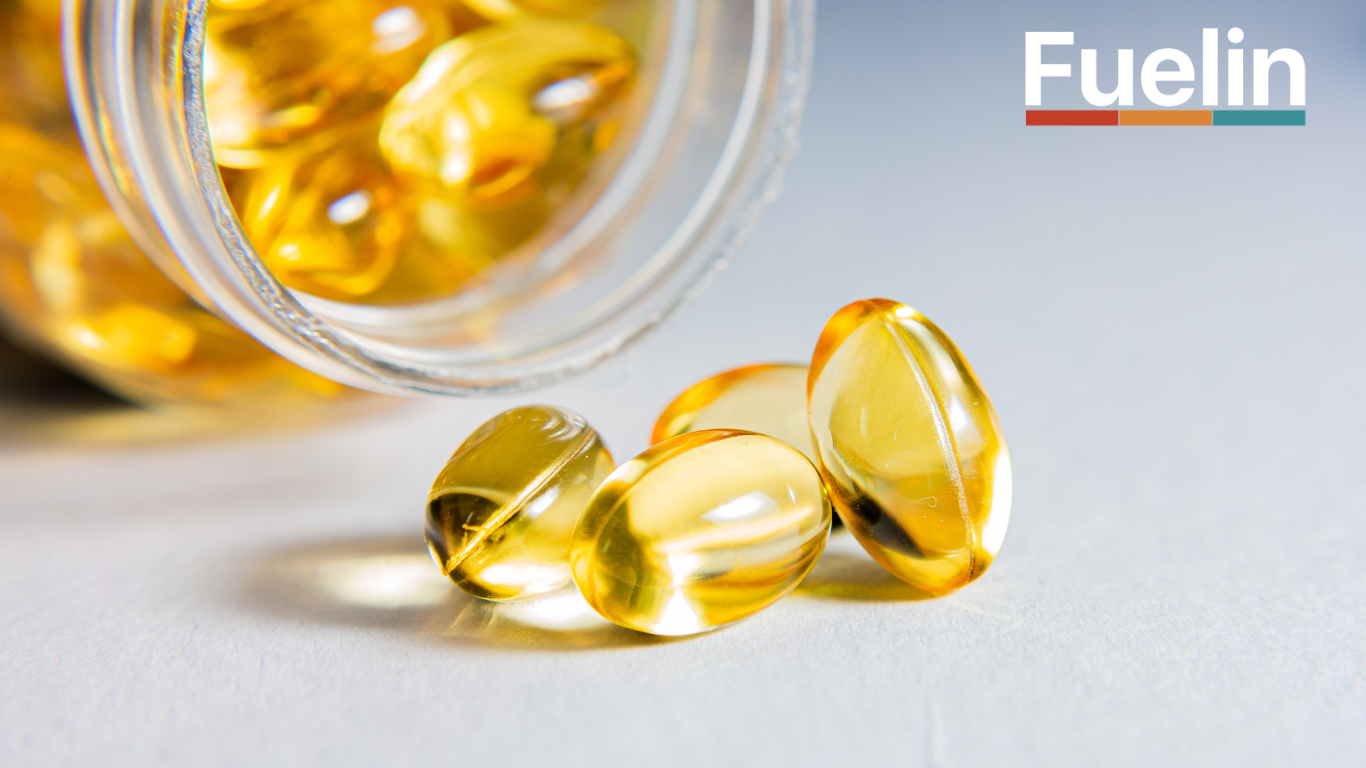
Why Every Athlete Should Care About Their Omega-3 Index
With insights from Dr. Bill Harris, co-developer of the Omega-3 Index
Key Takeaways
Omega-3s are essential long-term nutrients that support cardiovascular, metabolic, and neurological health. The omega-3 index, a blood-based marker measuring EPA and DHA in red blood cells, is a reliable indicator of omega-3 status and overall disease risk.
Common myths about omega-6s and seed oils are largely unsupported by clinical data. High levels of linoleic acid (an omega-6) in the blood are not harmful—in fact, they correlate with lower cardiovascular risk in long-term observational studies.
Whole food sources like SMASH fish and algae-derived supplements offer effective strategies to improve omega-3 status. The omega-3 index can be raised significantly within 12 weeks with targeted dietary or supplemental interventions.
Omega-3 fatty acids have long held a reputation for supporting cardiovascular health, cognitive function, and inflammation modulation. Yet in recent years, they’ve become entangled in a web of misinformation, ranging from the vilification of seed oils to confusion about omega-6:omega-3 ratios and which sources truly offer benefits. This article promises to peel back the layers of controversy and science, giving you, the athlete and everyday individuals clarity on what omega-3s are, why they matter, and how to track and optimise them for health effectively.
What Are Omega-3s and Omega-6s?
Fatty acids are chains of carbon atoms; their classification as saturated or unsaturated depends on the number and position of double bonds. Omega-3 and omega-6 fatty acids are polyunsaturated fats that differ in the placement of their first double bond relative to the "omega" (last) carbon in the chain. This seemingly minor structural variation has profound physiological implications.
The two main long-chain omega-3s are eicosapentaenoic acid (EPA) and docosahexaenoic acid (DHA), typically found in marine sources. Plant-based omega-3s like alpha-linolenic acid (ALA), found in chia seeds, flaxseed oil, and soybean oil, are often touted for their health benefits. Still, their conversion to EPA and DHA in the human body is minimal and insufficient to raise omega-3 index levels significantly.
Omega-6 fatty acids, particularly linoleic acid (LA), are abundant in the Western diet and are primarily obtained from seed oils. Contrary to popular belief, omega-6s are not inherently inflammatory. Observational studies involving tens of thousands of participants have shown that higher levels of LA in the blood correlate with a lower risk of cardiovascular disease and diabetes.
The Seed Oil and Ratio Controversy
The seed oil debate—often driven by social media—is frequently based on a misunderstanding of the biochemical and epidemiological data. While seed oils like soybean and corn oil are high in omega-6s, that alone does not make them harmful. Seed oils may contain other compounds that warrant scrutiny, but the omega-6 content itself is not the culprit.
Furthermore, the omega-6:omega-3 ratio is a flawed metric. It presumes omega-6 is harmful and fails to account for the absolute intake of either fatty acid. For instance, a person can have a 10:1 ratio with high intakes of both, or the same ratio with very low intakes—yet the health implications are vastly different. Instead, focusing on absolute levels of EPA and DHA via the omega-3 index offers a more precise and actionable metric.

What Is the Omega-3 Index?
The omega-3 index measures EPA and DHA as a percentage of total fatty acids in red blood cell membranes. Values below 4% are considered high risk, while 8% to 12% is regarded as the optimal range for cardiovascular health. This biomarker is more stable than plasma omega-3 levels, which can fluctuate daily with dietary intake. Much like HbA1c reflects long-term glucose control, the omega-3 index reflects longer-term fatty acid status.
Importantly, the omega-3 index is modifiable. Athletes and individuals can raise their index within 12 weeks by consuming oily fish (e.g., sardines, anchovies, herring) or taking a high-quality supplement with at least 1,500–3,000 mg combined EPA/DHA daily. Tools like OmegaQuant’s online calculator (https://omegaquant.com/omega-3-index-calculator/) can help estimate how much supplementation is needed based on baseline and target values.
Animal vs. Plant Sources: What Works?
Marine sources—especially the SMASH fish (salmon, mackerel, anchovies, sardines, herring)—remain the most reliable whole food contributors to omega-3 status. Cod, shrimp, and tilapia offer negligible amounts, while liver oils (like cod liver oil) can be rich in EPA/DHA but are usually not eaten regularly.
Plant sources such as ALA do not provide a viable route to optimising omega-3 index levels. Studies have consistently shown that ALA supplementation fails to raise blood DHA significantly and may slightly reduce it (Brenna et al., 2009). For vegans, algae-based supplements derived from microalgae that synthesise EPA and DHA offer the only practical alternative. These are now widely available and effective, albeit more expensive.
Omega-3s and Disease Risk: What the Research Shows
Despite several recent high-profile randomised controlled trials (RCTs) reporting neutral findings, a closer look reveals a more nuanced picture. For example:
GISSI-Prevenzione (2000): This landmark trial showed significant reductions in sudden death and cardiovascular mortality among post-MI patients taking 850 mg/day EPA/DHA.
REDUCE-IT (2018): Using 4 g/day of purified EPA (icosapent ethyl), this trial demonstrated a 25% relative risk reduction in cardiovascular events, albeit with a controversial mineral oil placebo that may have worsened outcomes in the control group.
VITAL (2019): This large primary prevention trial in healthy adults found no significant effect on composite cardiovascular outcomes, but did show a 30% reduction in heart attacks in the omega-3 arm—a fact buried in secondary outcomes.
Short-duration trials in older adults already on multiple medications are not ideal models to test lifelong nutrients. Much like Vitamin D, the preventive benefits of omega-3s are best realised through consistent, long-term intake—ideally from earlier in life.
Measuring and Acting on Omega-3 Status
Testing one’s Omega-3 index is straightforward and cost-effective. Kits like OmegaQuant’s dried blood spot tests can be done at home with a finger prick and mailed back for lab analysis. Athletes, in particular, benefit from this data, since the index is both actionable and responsive to dietary changes.
From a supplementation standpoint, users should aim for products delivering 1,000–4,000 mg of combined EPA/DHA per day. Capsules labelled “1,000 mg of fish oil” are often misleading—what matters is the amount of EPA and DHA per serving, not the total oil content. Liquid supplements typically provide higher doses per teaspoon. Additionally, choosing products tested for heavy metals, PCBs, and oxidation is critical for safety and efficacy.

Practical Application for Endurance Athletes
For endurance athletes, omega-3s may support heart rate regulation, HRV, reduced inflammation, and possibly concussion recovery, though performance-specific data is still emerging.
Summary
Omega-3s are not just supplements—they are essential nutrients with wide-reaching effects on human health, particularly cardiovascular and metabolic function. Despite the controversies around seed oils and the omega-6:omega-3 ratio, the scientific evidence strongly supports increasing long-chain omega-3 intake—particularly EPA and DHA—as a means to reduce disease risk over a lifetime.
For athletes and general populations alike, the omega-3 index is an accessible, reliable biomarker to assess and improve health status. Testing, adjusting intake through food or supplements, and re-testing 12 weeks later allows for a precise, individualised approach.
Ultimately, the message is clear: optimise your omega-3 intake now—don’t wait for disease to force your hand. Whether from sardines or supplements, what matters is reaching that 8–12% sweet spot and staying there. As Dr. Harris aptly put it, omega-3s should be viewed not as drugs for late-life rescue, but as lifelong nutrients for proactive health.
Thanks for reading,
Scott